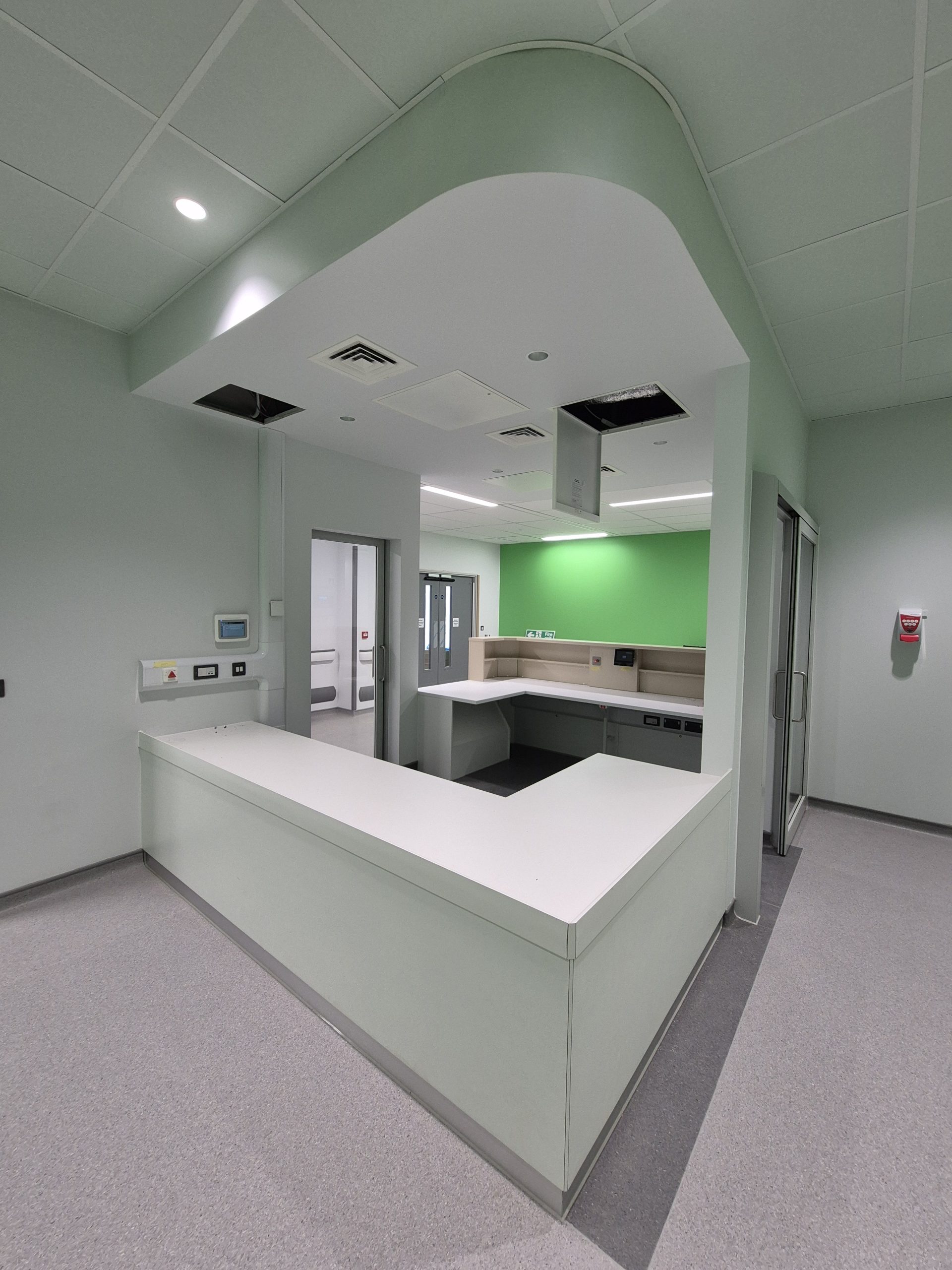Inside the main entrance of a busy NHS hospital is the reception desk. It stands…

The psychology of colour in healthcare furniture
Every aspect of a healthcare environment can impact upon a patient’s perception of their medical care and even help the recovery process. Studies suggest that the colour used can play an important role in this. The colours used in a healthcare setting do much more than make the building look attractive and interesting. When someone walks into a facility, they instantly make a judgement as to whether this place will provide them with the level of care they need. In our article we discuss the psychology of colour in a healthcare environment.
The world around us is composed of many colours. Without colour our perception of the world can be dull and lifeless. Often clinical, rehabilitation and care environments are exactly that – clinical and pale. Scientific studies suggest that the colours used on walls, on floors and in the installed healthcare furniture can influence the response of patients to the environment in which they receive services.
First impressions
Our first impressions of a healthcare setting are formed by many factors. Lighting, noise, a sense of privacy, odours and any art on display can play a part in helping us determine if we’re going to trust the facility to deliver us good quality care. But studies have also demonstrated that colour has an influence on our psychology and physiology.
Can colours contribute to health?
Research into how colours enable our sense of wellbeing and resultant healing tells us much about how patients might react in the environments where treatment is delivered. In the report “The Application of Color in Healthcare Settings,” published by the Center for Health Design (CHD), the authors point to the influence of colour in such environments but studies also conclude that the impact of colours can vary according to culture, demographics and patient group.
For example, it is thought that green shades give us a sense of balance and harmony while red can raise blood temperature and help those suffering from fatigue or exhaustion. A touch of orange can trigger mental activity, so it is often avoided in mental health settings, but orange can also stimulate appetite, which could help in the treatment of those with eating disorders. The use of yellow can aid digestion and intestinal activity.
While studies indicate that further research and indeed guidelines into the use of colour in healthcare need to be considered, it seems that carefully chosen hues in the hospital furniture installed in an environment can be important and blocks of colour on doors and worktops can contribute to the overall healing powers of medical and other care environments.
Psychology of colour – where to find out more
If you’re designing or specifying a fitted healthcare furniture project, please get in touch.
As one of the UK’s leading manufacturers of fitted, specialised furniture for hospitals and healthcare facilities, we can design, manufacture and install bespoke furniture to meet your individual project requirements. Our furniture is available in a range of colours and we have built and installed furniture for healthcare facilites in reds, orange, blue, green, grey, white and many other colours to match the customer’s requirements. See our Case Studies page for photos and description of some of our installations.
Our Healthcare furniture range is specified for all types of hospital refurbishment and new development projects, from NHS Trust premises to private hospitals. All our furniture is manufactured at our factory in Broadstairs, Kent, here in the UK. Find out more about our range of healthcare furniture.








